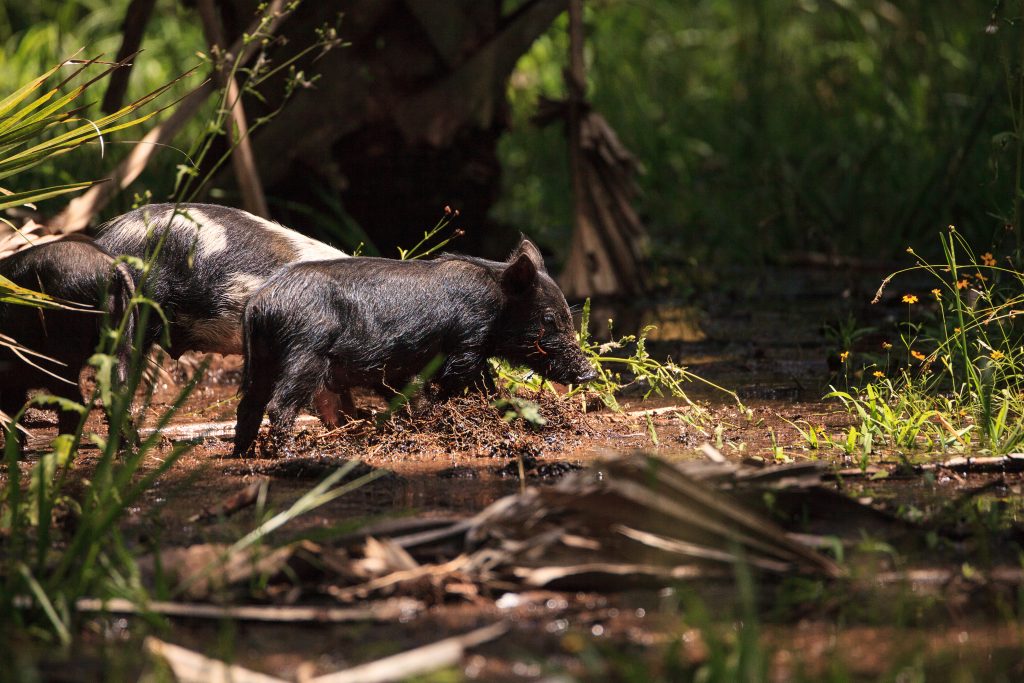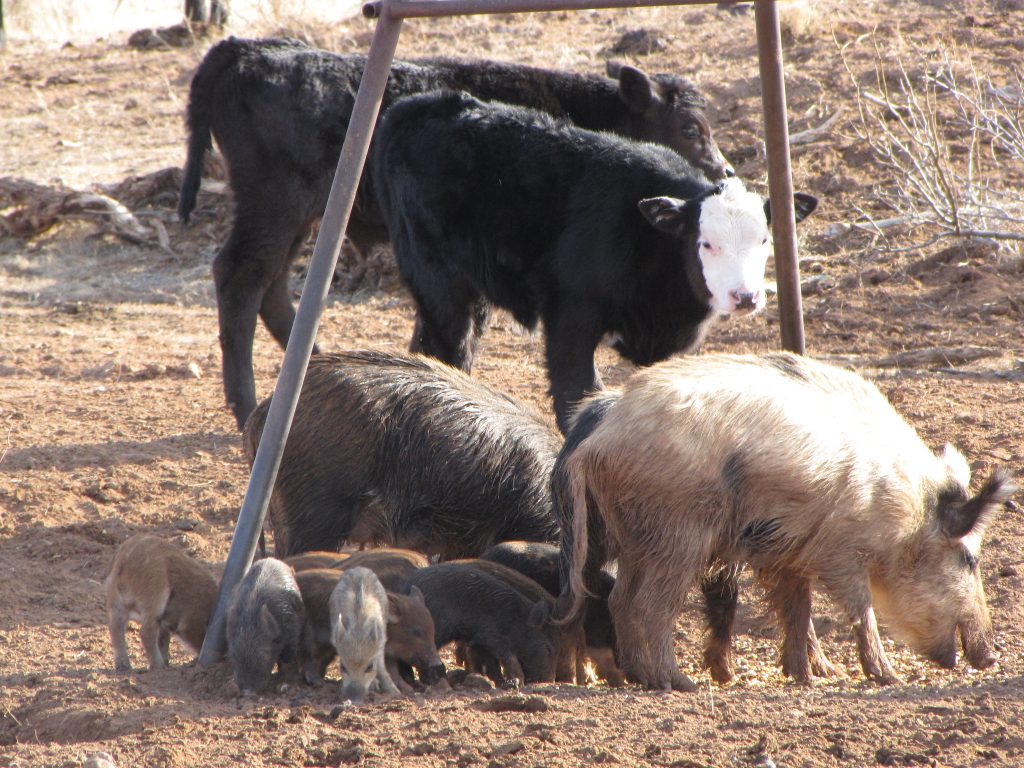
Feral swine are not native to the Americas or Canada. They were brought to the United States in the early 1500s by explorers and settlers as a food source. In the 1900s, the Eurasian or Russian wild boar was introduced to parts of the United States for the purpose of sport hunting. Feral swine’s incredible adaptability allowed them to establish populations across North America, while human aided movement and repeated introduction promoted the expansion of the species range.
In the 1980s, Eurasian wild boar were introduced to Canada for farmed meat production and shooting operations. At its peak, wild boar farming in Canada consisted of 200 producers who kept approximately 36,000 animals. Demand for wild boar was never as strong as anticipated and lack of a stable market in the 1990s led some producers to intentionally release their livestock into the wild. Today, the number of farmed wild boar is drastically reduced, however escapes and releases continue to occur. Once in the wild, wild boar and escaped domestic pigs can breed together and create hybrid offspring.
Feral swine cause tremendous damage to natural resources and ecosystems, hurting native wildlife. They damage agriculture, hurting farmers, ranchers and rural communities. They can also carry and spread disease and parasites of concern to livestock, wildlife and even people.

Feral swine damage crops by consuming them or by rooting, trampling and wallowing. While they will eat almost any crop, commonly targeted crops include sugar cane, corn, grain sorghum, soybeans, wheat, oats, peanuts, rice, pumpkin, melons, canola and lettuce.
Feral swine also damage grasses, killing desired plant species and often encouraging the growth of undesired weak species. Feral swine will turn over sod and pasture to expose the tender roots of plants, grubs and invertebrates which ultimately destroy the pasture. The ruts and rises this behavior creates make it challenging, even impossible, for farmers to drive tractors over the field to harvest.
Feral swine devastate orchards and vineyards by consuming the fruits and nuts produced and damage small trees and vines by rubbing the plants with their bodies and tusks.


Feral swine harm native wildlife by competing for food, habitat and water, spreading diseases and direct predation. This often deters native species from living in the area and utilizing natural resources. The habitat disturbance and seed and plant dispersal also lead to the spread of invasive plant species.
Feral swine also prey on eggs, nests and the young of ground nesting birds, reptiles, amphibians, small mammals and even deer fawns. Species affected include threatened or endangered species such as sea turtles and shore birds, and game species such as quail, grouse and turkey.
Feral swine also contribute to increased erosion, destruction of sensitive wetlands and the contamination of bodies of water with harmful diseases.


Feral swine are known to carry at least 30 viral and bacterial diseases and nearly 40 parasites that can be transmitted to humans, livestock, pets and other wildlife. These pathogens can be spread through direct contact with feral swine or scat, contaminated feeding and watering containers or by eating raw, infected swine meat, organs or other tissues. Feral swine may also eat or contaminate feed, mineral supplements or water sources.
Feral swine can transmit pathogens to livestock, which can result in lower productivity, veterinary costs, financial losses or even mortality. Feral swine also cause stress to livestock through their interactions which can reduce vitality of the herd.

Feral swine cost BILLIONS
in damages and control costs EACH YEAR.
Squeal on Pigs! and help
stop feral swine!